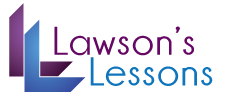Microphone Manners
Use of a microphone in speech giving
Objective: Students will be able to identify the three major types of microphones and be able to properly use the two major types used in speech giving.
Materials: 4 wooden spoons or rulers and 4 butterfly clips or paperclips (1 of each per group); Microphone handout
Steps:
1. Divide the class into two groups by counting 1, 2; 1, 2; etc. down the rows. Give spoons or rulers to group 1 and butterfly clips or paperclips to group 2.
2. Explain to the students that the spoons/rulers represent stationary/hand-held microphones and the clips represent lavaliere microphones.
3. Pair the students together by allowing the students with spoons/rulers to find a student with a clip.
4. In their groups of two have the students, one at a time, demonstrate to their partners how they believe their microphone should be properly placed or held in order to get the best use/sound out of it.
5. When both group members have had a chance to demonstrate their microphone, have the partners trade devices and demonstrate what they believe to be the correct use of their new type of microphone to their partner.
6. After both group members have had a chance to demonstrate their new microphone, have the students stay in their groups and individually share their ideas with the class through a discussion on how both microphones should be used/placed. Make sure to hear from each student and don’t make correcting remarks until all students have shared.
7. After each student has shared their ideas, correct them by giving a proper demonstration of each microphone.
8. Have the students return to their desks.
9. Through a class discussion have the students brainstorm the appropriate times when each microphone should be used. For example: Hand-held – interviewing, impromptu situations, large groups. Lavaliere – anchoring, hands-free use, single person use, when a microphone shouldn’t be seen.
10. If a real stationary/hand-held microphone is available that is hooked up to a speaker somewhere in the school, take the students to it and have them one at a time practice using this type of microphone. They will be able to hear what their words would have sounded like if they used it the way they demonstrated with the spoon/ruler in the group work compared to how they sound while holding it correctly.
Results: Have the students write a one page paper addressing how the use of a microphone can enhance a person’s speech giving abilities.
Mandy Brabec
Fall 2009
Auditorium or Radio station?
Microphone use
Objective: After completing this activity, student will be able to use a microphone correctly in front of audiences.
Materials: microphone & loudspeaker, lecture will take place in the radio station
Steps:
A.
1. Ask students the question. “If your audiences are dozens or hundred…, how can you tell them what you want to say clearly?”
2. Teacher shows a microphone and say, “If it happens such a situation, you might use a microphone” Teacher tells the advantage of microphone.
3. Teacher uses microphone in a classroom. The sound will be loud. So, teacher tells the disadvantage of microphone to students, too.
4. Teacher shows loudspeaker. When teacher talks by using microphone, students can hear “howling” from the loudspeaker. So, teacher explains why it happened.
B.
1. Move to the radio station and show the different microphone.
2. Explain those differences like; the microphone that used a little while ago is for dozens or hundred people in front of you. However, this microphone is for listeners if the listener is only one person. So the functionality is different.
3. Make them think what functions microphones have.
4. Discuss about that.
Result: Students think when they have to use a microphone. And, they will list the advantage & disadvantage of two microphones each.
Aki Kato
Fall 2007
